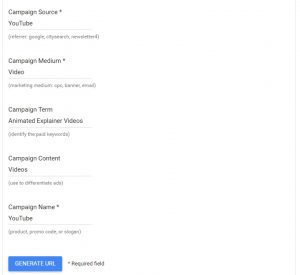So you’re going to do your own SEO. Where do you start? What’s the first step?
Most SEO experts will tell you a campaign should begin with a good old fashioned competitive analysis.
You’ve probably done at least one of these before, but it probably wasn’t quite like this. SEO competitive analyses have their own particular flavor.
A standard SEO analysis should include some, if not all, of the following:
- Keyword research
- Keyword research will mainly consist of using google keyword planner to find high volume, low competition keywords to target for your site. The less competition there is, the easier it’ll be to get improved rankings. The higher the volume, the more you stand to gain from top rankings.
- Internal site audit
- An internal audit of your website will serve a number of purposes. In order for your website to be properly crawled and indexed, you’re going to focus on building a solid site architecture, organizing page titles and layouts, making sure your code is clean and your page loads quickly, etc.
- Backlink profile analysis
- When you analyze your site’s backlinks, you’re checking for a few things. Do you have any broken links? Do you have any number of spammy/poor quality links? Fixing issues like pave the way for improved discoverability.
- Data analysis and comparison
- There are so so many benefits to this aspect that you simply must give it appropriate time and energy. You can learn from your competitors’ mistakes and capitalize on their successes.
For this guide we’ll be focusing specifically on the last step, effectively analyzing competitors…
Don’t ever lose sight of the main goal here. SEO delivers huge results, and if you’re not ranking in a top spot, you’re missing out on traffic. If your competitors have that top slot, they’re probably killing it comparatively.
Here’s what Moz found regarding organic click through rates in their 2014 survey.

This is the reason for all of your efforts. This is the harsh reality of SERPs. If you’re not in the top 3, you might as well not be doing any SEO. It’s a winner takes all kind of game.
How to Do A Competitive SEO Analysis
A competitive SEO analysis requires a deep look at keywords, rankings, backlinks and domain authority.
Let’s first elaborate on the difference between a business competitor and SEO competitor because the terms aren’t mutually exclusive.
You probably have lots of business competitors. They’re companies that offer a similar product or service, and target a similar audience.
An SEO competitor on the other hand, is any business that targets the same keywords that you do. This business might have a different value proposition for its customers, or may offer a different solution the same problem your business addresses.
What makes them an SEO competitor, is that they’re fighting for the top spot on any number of the keywords that you’ve decided to target yourself. Further, if they’re in the same location as you, they may also be doing local SEO and winning tons of potential leads with a top-slot map listing.

Those more prominent listings seem a bit more appealing than the unnamed dots don’t they?
As you also probably noticed, keywords are a recurring theme here. You’re not going to make it far without a solid understanding of this so don’t let yourself slack even an inch.
Let’s break down this whole process into 3 steps.
1. Find who’s ranking for the best keywords for your business
Knowing what keywords convert the most for your particular business will help get the ball rolling. From there, you can find out who your SEO competitors are, and how you can go about trying to beat them for the coveted #1 spot.
I can hear you asking “OK OK I get it, but how do I find out what keywords will be most profitable?”
Luckily there are a number of powerful tools at your disposal. The most basic of these is Google Keyword Planner.

The simplest way to use this tool, is to put in what you think your best keywords will be, and compare the search volume of those to the suggestions Google lists below. This is a great way to find which keywords will deliver the most hits with the least amount of competition.
To get a more in-depth view though, you might try Spyfu, SEMrush, Moz, and/or Raven Tools. I’d recommend you familiarize yourself with at least one of them. Using these, you’ll be able to ascertain what your SEO competitors are targeting and estimate how much traffic the top ranking contenders are getting from each keyword.
We’ll go into greater detail about these tools later in the article, but for now, just know that you won’t be left to figure this stuff out on your own!
2. Analyze SEO competitors’ websites
At this point, you should know who your competitors are and what keywords you’re both targeting.
Next up, you’re going to begin analyzing their websites so you can learn from their successes and failures.
Take some notes on their respective domain authority using Mozbar. Afterwards, use Spyfu to track their recent progress in the rankings (using Spyfu). The goal here is to categorize your competitors into a 3 tier system.

The first tier should consist of established industry competitors with strong domain signals.
The second tier will be where your closest rivals reside. They should have a similar domain authority as yourself, but they’ll be getting higher ranks than you are currently.
The third and final tier is home to the up and comers. The fast movers. These competitors should have a similar domain authority to yours but are clearly showing signs of quick progress in the SERPs.
Wondering why you’re organizing the data in this fashion? It’s simple, when you analyze what each of them is doing, you’ll be able to get a feel for what strategies are working in the space. After that, all that’s left is to implement the best of all of them in your own SEO campaign!
3. Discover how your competitors are ranking for their keywords
Since bullet lists make all of our lives easier, let’s use one here. These are the key questions you should be asking when you’re analyzing your competitor’s SEO campaigns.
- How many pages does their site have?
- Do they publish content? If so, how frequently?
- How’s the quality of their backlink profile?
- Do they have a social media marketing plan?
- How many times has their domain been shared?
These signals should help you start to generate a rough idea about what seems to be working. It might be an amorphous “sense” at first, but trust your gut. There’s definitely a science to looking at data, but there’s also an art to it. We’ll get there don’t worry.
Using the tools mentioned below in combination with the data analysis skills I’ll impart upon you afterwards, you’ll be able to make good use of all this hard work and implement a competitive strategy to take down your foes!
Tools for SEO Analysis
As mentioned above, there are a number of great tools at your disposal to help you perform your competitive SEO analysis. In all honesty, the hardest part might be picking which ones will be best for your specific needs.
Spyfu, Ahrefs, Mozbar and Raven Tools are all quite robust and can help identify competitors. Then again, their real glory lies in more advanced analyses since after all you can just run a simple google search of your targeted keywords to find your competitors.
Raven Tools is the most fully-featured tool of the three I just mentioned. It has profoundly deep analytics for rankings, traffic, and link-building.

Mozbar is one of the easiest ways to see D.A. and Moztrust scores. It’s also free, so there’s really no reason to not be using it. It’ll sit at the top of your view of any website your visiting and deliver some pretty useful and relevant data at a glance.
![]()
Spyfu gives you in-depth views of your competitors rankings, keywords, clicks, and their evolution over time. It’s a data junkies heaven! Here’s a sample of what you’ll see above the fold when you first look up one of your competitors.

Ahrefs is the tool you’re going to want to use when you’re doing that backlink profile analysis we mentioned earlier. It presents so much data it can be a little daunting at first. But it has a very handy comparison feature and once you’re used to it, you’ll forget how you ever could have lived without it.

If you want to get some more information and learn how to get started with any of these tools, check out the following guides guides.
Understanding The Data
Last but certainly not least, the fun part!
We’re going to cover how you can benchmark your own site against competitors.
First of all, the simplest way is to use one of the tools mentioned above. Each of them will allow you to stack your site again competitors and this is the easiest way to compare who is winning where.

Spyfu will show you a variety of comparisons, the one above shows you the number of keywords a domain’s most direct SEO competitors are ranking for.
An entirely different way to go about it, is to create a simple spreadsheet for yourself containing all of the metrics we went over earlier in the article.
You can then do some independent research if you need further information about any of the particulars, but by using common sense and organizing your data in a readable format you should be all set to start off in the right direction.
Keep in mind that this is only one of the initial components of a solid SEO strategy. Be sure to read our guide for a step-by-step breakdown of how to build your own.
This article was originally published at RankPay.
Digital & Social Articles on Business 2 Community(81)
Report Post









